A while back I wrote a blog called the heart of computer programming. It was a play on words inspired by The art of computer programming by Donald Knuth and to illustrate the blog I chose the Three of swords card from the Rider-Waite-Smith‘s Tarot deck.
I’ve been stuck for a while on defining for myself what human-computer interaction (HCI) is, and why it means so much to me, so today, I am wondering: If the heart of computer programming is the Three of Swords, which card in the Tarot represents the heart of HCI?
For me, it is the Seven of Cups.
Cups in the Tarot represent water, usually seen as full or empty, or as in the Five of Cups, knocked over with their contents spilling out. The cups symbolise emotions, dreams, and relationships. To which Mary Greer, in Tarot for your self, adds: Cups are pleasure loving with an aesthetic orientation, and sociable, which sounds like a very cool alternative definition of user experience (UX), and I like it. Swords represent thoughts which is why I choose swords to illustrate a mathematician’s take on programming.
The Seven of Cups represents the creative imagination and the moment when someone needs to make a choice of which direction to go in. Each cup represents a possibility but we cannot get distracted otherwise we may lose ourselves in fantasy and daydreaming, and experience analysis-paralysis.
Prioritising can be difficult to do when our creativity and emotions are involved which is what happens in any project in HCI given that it is about solving complex problems for humans who come equipped with a whole range of varying responses and previous experiences.
HCI has no core competencies and is ever evolving as we keep redefining what usability and our responsibilities as designers include such as privacy, trust, transparency and so on. On top of this, any given interaction designer’s background as a psychologist, programmer, graphics designer, etc., may be different from another designer’s which obviously leads to different but valid competencies that make it hard to say what is absolutely core. In this way, it gets harder and harder to define in a simple sentence what HCI means and what an interaction designer should and shouldn’t be able to do.
Yesterday, I was trying to write a blog to answer the question: What is human-computer interaction? In the end, I renamed the blog: My favourite definition of human-computer interaction as I got distracted by constraints, cues, and error handling. Useful things to write about but not at all what I set off to do. I got distracted by a shiny cup of practicalities and a credit card with Dr Rurg Stalker on it.
It can be difficult to choose the right cup because it can be difficult to prioritise correctly as there is often a trade-off in the design process. The more multifunctional something is designed to be, the less usable it will become. The more aesthetic something is, the less usable it is in a form follows function style. There is always a compromise. The trick is not to get seduced by the cup of shiny things instead we need to pick up the one which is useful and gets the job done to focus on user experience and create something which supports our users.
The Seven of Cups represents creative possibility, and of course, sits between six and eight on the journey through the Tarot’s cups. The Six of Cups represents nostalgia, perhaps for projects or people long gone, and the desire to see them return, a do-over, a second chance to rewrite the story and reach the Ten of Cups which is the card of happy endings demonstrated by the rainbow of 10 cups. In the Eight of Cups the cups are full but they no longer satisfy us, perhaps we didn’t choose well, or perhaps we did, and there is nothing else to learn. Or perhaps, it’s just that eight cups are no longer enough to fill us up and so we leave to search out new cups, new experiences and projects elsewhere. Our hearts are no longer in it.
Can we find the heart of HCI in the Seven of Cups?
I’d be tempted to say that there is no heart. Rather like the Tin Man in the Wizard of Oz, who has great empathy with or without a heart. Empathy is a key factor in design thinking. Or perhaps, a better way to put it is to say that we define what the heart is at any given moment. We say: here is the heart, here is the centre. Rather like manipulating matrices, let o = our point of origin, but as we engage in ideation, we nay have to change our o , translate the whole matrix, and our world view – which makes me think of the Hanging Man (VII) who hangs upside down to see the world from a new perspective.
More often than not, when someone comes to us to design something to solve a problem they think they have, we may have to give them the solution to a completely different problem, we have to get to the cause, not just the symptom, to paraphrase a certain Dr Frank-n-Furter in The Rocky Horror Picture Show.
Or perhaps we can choose all seven of Cups as we take and share tiny sips of each, rapid prototyping style, like wine-tasting or pic-n-mix before we commit to one cup. We don’t know what our users want until we create some experiences for them to find out what their hearts desire, after all that is our job.
We define and translate the heart of HCI to make everyone’s experiences better ones and we do this because design is love.
My course on HCI is now available on Udemy.

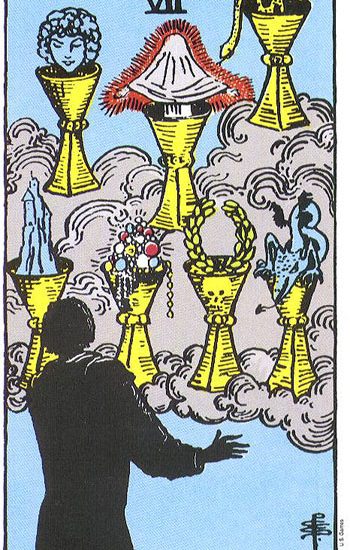

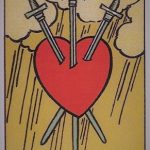
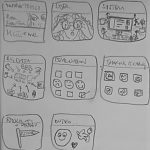
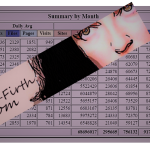
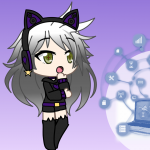
2 comments